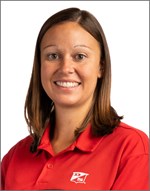Make Field Scouting A Priority
BY Agronomy Team
ARMYWORMS MARCHING IN
Armyworms have been found at threshold numbers in parts of the Dairyland Seed footprint. They have been found feeding on newly seeded forage crops as well as lawns. The name armyworm is very accurate as they will “march” from field to field.

 Though few Armyworms overwinter in our area, most pressure comes from moths that move in from southern states. Many impacted fields have a “stemmy” or pale appearance from the road. Upon scouting, damage similar to these photos taken in Wells County, Indiana on 8/28, was observed. In several areas of the field, all leaves had been eaten and only stems remained. In most cases, damage as low as 10-15 percent defoliation can warrant control measures.
Though few Armyworms overwinter in our area, most pressure comes from moths that move in from southern states. Many impacted fields have a “stemmy” or pale appearance from the road. Upon scouting, damage similar to these photos taken in Wells County, Indiana on 8/28, was observed. In several areas of the field, all leaves had been eaten and only stems remained. In most cases, damage as low as 10-15 percent defoliation can warrant control measures.

If an insecticide application is warranted, be sure to follow the PHI or Pre-Harvest Interval of your selected insecticide. The PHI is the amount of time that must pass between an application of a pesticide and harvesting of the treated crop. Listed below are a few products that are labelled for armyworm control in alfalfa.
|
Product |
Rate |
PHI |
|
Baythroid® XL |
2.8oz |
7 days |
|
Colbalt® Advanced |
38oz |
21 days |
|
Fastac® CS |
3.8oz |
7 days |
|
Grizzly® Too/ Warrior II |
1.92oz |
7 days |
|
Mustang® Maxx |
4oz |
7 days |
|
Malathion 5 |
2.25pt |
0 days |
|
Lambda-Cy |
3.5oz |
7 days |
If you have any questions, please contact your Dairyland Seed DSM or Regional Agronomist.
CONTINUE TO SCOUT, TAKE NOTES, LEARN, MAKE ADJUSTMENTS AND DECISIONS FOR 2022
As we draw closer to corn and soybean harvest, make a habit of taking a note pad (electronic versions work, just be careful to not get wet) to your fields and plots to take notes of your observations. A few things to be mindful of when walking fields prior to harvest:
- Weed Escapes
- Did your weed control plan live up to your expectations or do you have weeds that it missed? If so, do you recognize and know what weed it is? Or was it a timing issue when it was sprayed or worked, plugged nozzle or improper mixing? If you do not recognize or know what the weed is, contact your Dairyland Seed District Sales Manager or Agronomist to help. We have seen an increase of Palmer Amaranth spreading into new areas, and we want to make sure we stop it where we can.
- Do you need more herbicide resistant traits like Dairyland Seed Enlist E3® soybeans that allow you more flexibility in timing when you want to safely spray your crop as well as the products you can safely use.?
- Disease Pressure
- CORN: Are you seeing heavier disease pressure this year versus previous years? Are you seeing new or different diseases starting to appear? We have seen areas with Tar Spot and Physoderma Brown Spot and Stalk Rot as well as Goss’s Wilt.
- SOYBEANS: Look for Sudden Death Syndrome (SDS), Sclerotinia White Mold (SWM) Frogeye Leaf Spot (FLS). Have you seen them before or are they in a new area? Do you need a different Dairyland Seed variety to help with these diseases or additional seed treatments or fungicide applications to help with control measures?
- Fertility
- Are you seeing nutrient deficiencies in your crop? Did your nutrient management plan work or do you need to make changes? Do you need to split apply your Nitrogen and Sulfur in your corn?
- Or, are your soybean leaves showing a yellow tint on the outside leaf margins which indicates Potassium (K) deficiency. Much like corn and alfalfa, soybeans do need fertility. Are you applying enough fertility to supply their needs?
- Insects
- Are you seeing late season corn rootworm beetles? Identify whether they are Northern, Western or Southern as this could have a bearing on what trait you use for next year’s crop.
- Are you seeing more areas with Soybean Cyst Nematodes (SCN)? Should we soil test those areas to find out SCN levels? Higher levels may warrant a different seed treatment or rotation.
- Standability or Lodging
- Did we have wind or weather events that will push up harvest on a field(s)?
- Which fields need to be harvested first and why?
When you are walking Dairyland Seed plots, are you seeing products with better disease or insect tolerance? Do these products have better ear development or pod set? Do you like what you see? Take notes of what you like and don’t like about the products you plant, as well as the new products you see in the plot. These notes can help your Dairyland Seed Dealer as well as District Sales Manager and Agronomist fit the products you are looking for.
When the combine or choppers start to roll, take your notes with you and write down or type in what didn’t work or what you would like to change as well as the successes you see. Did that new tile you put in help with water management? Did that additional nutrient application bring in more yield and or a better quality crop? Taking good notes allows you to look back to decisions you made as well as forward to find what works and what needs to change.
Dairyland Seed’s Agronomy Team is more than willing to help you come up with solutions to make you more successful.
FALL ALFALFA FERTILITY
Fall is one of the busiest times of the year on the farm, but we need to take a few minutes and look at our alfalfa stands to decide what we are going to keep and what we will rotate back into another crop for the next growing season. Look at fall weed control for perennial weeds, if we do tillage and when, as well as timing out the last cutting.
If we are going to keep the stand, we need to fertilize it. In most situations it is highly recommended to split apply the nutrients that alfalfa needs; a percentage after first crop and the remaining after last cutting. Five tons of harvested alfalfa will remove: 255 units of N, 60 units of P, and 245 units of K. If you do not replace this, odds are you are reducing the life of the stand. It’s more common to see winterkill of alfalfa on fields with lower fertility levels.
If you decide to take a fall cutting of alfalfa, it must be either cut early enough in the fall to regrow and replenish root reserves or late enough so it does not regrow and waste its root reserves on short growth. While taking your fall cutting of alfalfa, raise your cutter bar height to leave at least three to five inches of stubble.
Take the time to get out into your alfalfa fields this fall is to make spring assessments easier. We like to see at least 40 stems per square foot in the spring. Plant count per square foot depends on the age of the stand: more than 15 plants per square foot on younger stands, but older stands can get away with closer to 5 since the stems per plant will be higher.
Lastly, if you are looking at seeding alfalfa next spring, check the pH of the field(s) you will be seeding. If lime is needed to correct the pH, apply it this fall which allows the lime a chance to work into the soil and start correcting low pH.
 |
 |
 |
 |
 |
| Brian Weller Western Region 507.456.3034 |
Dan Ritter Central Region 219.863.0583 |
Branden Furseth Northern Region 608.513.4265 |
Mark Gibson Eastern Region 260.330.8968 |
Amanda Goffnett Eastern Region 989.400.3793 |
